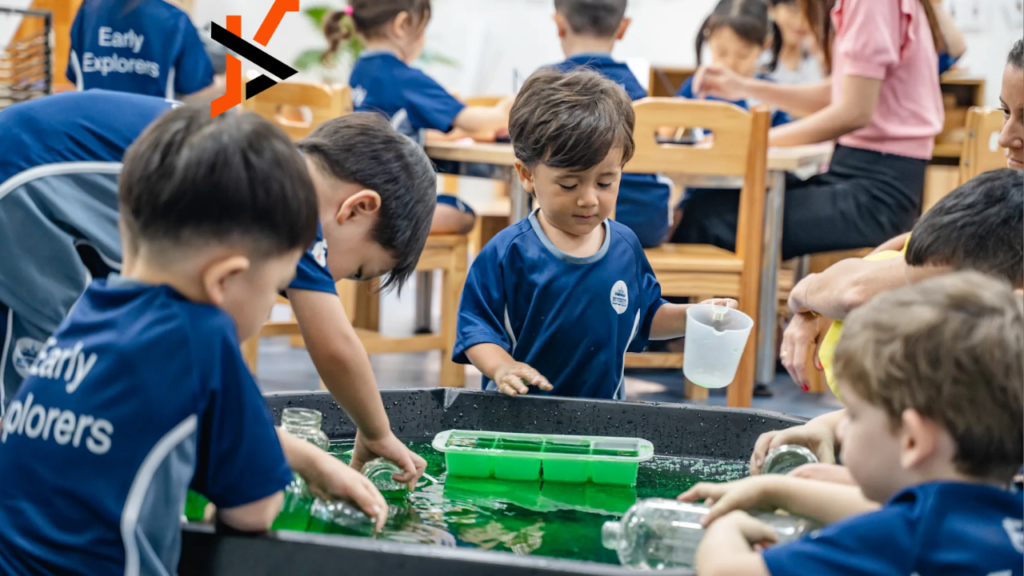Understanding the nuances of child development is crucial for parents and educators. Among the foundational stages, parallel play in child development holds a unique place, promoting key growth milestones. This article delves into what parallel play is, its importance, and how you can support it for holistic development.
What is Parallel Play?
What is parallel play in child development? Play in parallel to one another refers to a form of play in which the children play alongside each other but don’t necessarily engage with each other. Though it may look like an individual play at first sight, it is an important stage of a child’s social and emotional development. For instance, a toddler stacks blocks next to another child, playing with puzzles, and playing parallel. This stage facilitates the watching and following stage, which forms the basis of later friendly skills.
Developmental Stages and Parallel Play
Parallel play is not an isolated form of play. It is a spectrum of developmental processes that unfold over time and determine a child’s social play behavior. Knowledge of these stages enables caregivers to respond appropriately to children’s development.
Mildred Parten’s Stages of Play
The concept of Parallel Play in Child Development is rooted in Mildred Parten’s stages of play, which outline six phases:
- Unoccupied Play: Random movements without a specific goal.
- Solitary Play: Independent play without interest in others.
- Onlooker Play: watching peers without participating.
- Parallel Play: Playing alongside others without direct interaction.
- Associative Play: Limited interaction with shared activities.
- Cooperative Play: collaborative play with defined roles and goals.
Parallel play typically emerges around 18 months to 2 years and is integral to transitioning from independent to interactive play.
When Does Parallel Play in Child Development End?
Parallel play usually concludes by age 3 or 4, as children gain social and cognitive skills to engage in more interactive game forms. However, the timeline can vary depending on individual developmental milestones.
When Do Children Start Playing Together?
Most children begin cooperative play around age 4, but the transition is gradual. Parallel play serves as a bridge, allowing children to observe and learn social cues before diving into shared activities.
Benefits of Parallel Play in Child Development
Parallel play has numerous advantages in child development, making it one of the most valuable activities in early childhood.
Social and Emotional Growth
Children learn through parallel play, observation, and social behaviors that help them become empaths and understand. This also allows them to deal with emotions such as frustration or joy, which is important for emotional intelligence.
Motor Skills Development
Playing, stacking blocks, or drawing helps a child develop gross motor and fine motor skills. These skills are essential for practical activities like writing and dressing and can increase self-esteem.
Language Development
While perhaps too young to engage directly with others, children still acquire new words and other forms of communication by listening to friends and other grown-ups at play. For tips on nurturing early skills, read about skills to know before kindergarten.
Collaboration and Sharing
For the first time, Parallel Play in Child Development uses common items and toys. For example, two children given different toys and playing in the same sandbox will learn to live happily side by side to work together later during a group project.
Independence
While Parallel Play in Child Development encourages proximity, it also fosters autonomy. Children learn to entertain themselves and make independent choices, essential traits for personal growth.
How to Support Parallel Play
Parallel play is easy for the child to accomplish, but it requires assistance from the caregiver or educator to ensure it happens.
- Set Playdates: Arrange age-appropriate play sessions to encourage side-by-side interaction.
- Provide Ample Toys: Ensure enough toys to avoid conflicts and promote exploration.
- Create Themed Play Zones: Design areas for specific activities, such as building blocks or art projects.
- Incorporate Music and Dance: Use songs and movement to engage children in parallel activities.
- Model Play: Demonstrate simple activities alongside children to encourage imitation and comfort.
Why Parallel Play is Essential for Holistic Child Development at ISHCMC
Parallel Play in Child Development is not just a transitional process that children must get through; it is a safe and significant part of growing up. This form of play helps children learn social skills, become more independent and prepare for what comes next.
To get a total child development solution that actually treasures each phase of your child’s life, you should check the International School Ho Chi Minh City (ISHCMC). Focusing on creating a conducive atmosphere and offering a learning-centered curriculum framework, ISHCMC is an ideal learning partner.
FAQs
Understanding and fostering parallel play in child development can raise several questions for parents and educators. Below are answers to common queries about this crucial developmental stage:
1. What is the significance of parallel play?
Parallel play is important to children because it teaches them social, motor, and language skills in preparation for fully interactive play.
2. How can I encourage parallel play at home?
Provide a variety of toys, set up playdates, and create distinct activity zones to promote parallel play.
3. Is parallel play a sign of delayed development?
On the contrary, parallel play is just as natural and is the developmental stage preceding cooperative play. Every child is different, meaning they will learn at their own rate.
4. How long does the parallel play stage last?
Typically, parallel play lasts until around age 3 or 4, when children transition to associative and cooperative play.

